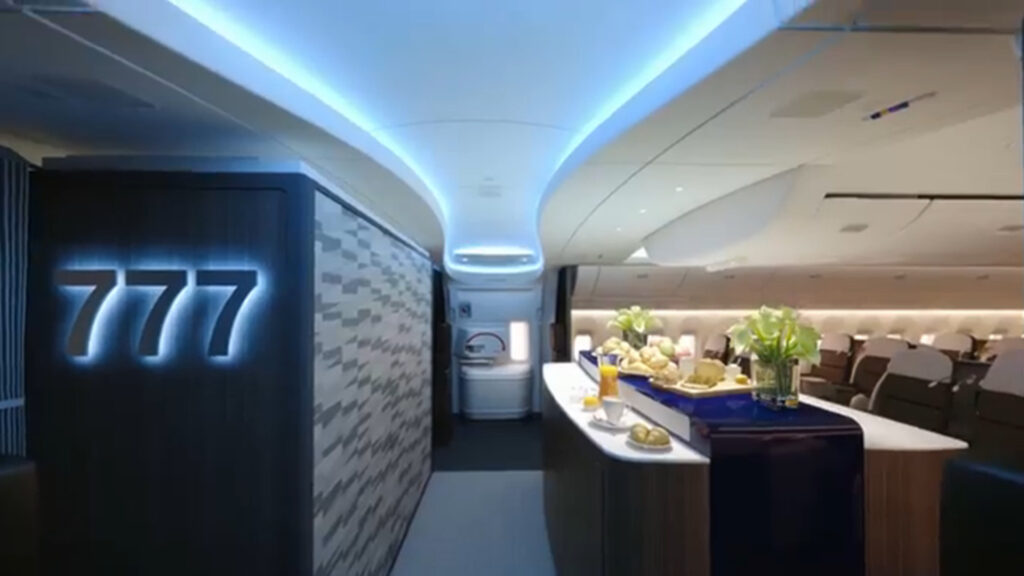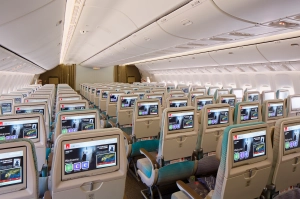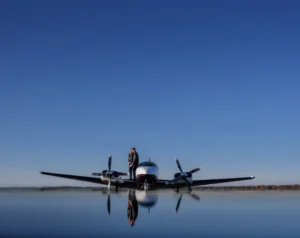Welcome to our in-depth look at the Boeing 777, often hailed as the “Triple Seven,” a marvel of aviation engineering that has redefined long-haul flights. This aircraft, developed by Boeing Commercial Airplanes, is renowned for its exceptional performance, efficiency, and passenger comfort. Join us as we explore the history, design, and impact of the Boeing 777 and discover why it continues to be a favorite among airlines and travelers.

A Brief History of the Boeing 777
The journey of the Boeing 777 began in the late 1980s. Boeing set out to bridge the gap between its 767 and 747 models, aiming to create a versatile and efficient aircraft for long-haul routes. The 777’s first flight took place on June 12, 1994, and it officially entered commercial service with United Airlines on June 7, 1995.
One unique aspect of the 777’s development was Boeing’s collaboration with eight leading airlines: United Airlines, American Airlines, Delta Air Lines, ANA, British Airways, Cathay Pacific, Japan Airlines, and Qantas. This “Working Together” group provided invaluable feedback, ensuring the 777 would meet the diverse needs of global carriers.
Cutting-Edge Design and Engineering
The Boeing 777 stands out with its innovative design features. Its airframe primarily consists of aluminum alloys, but it also incorporates advanced composite materials to reduce weight and enhance fuel efficiency. The aircraft’s wings, designed with a high aspect ratio, improve aerodynamic performance and reduce drag.
The 777’s twin-engine configuration is a standout feature. Powered by GE90, Pratt & Whitney PW4000, or Rolls-Royce Trent 800 engines, the 777 delivers impressive thrust and reliability. The GE90, in particular, holds the record for the most powerful commercial jet engine, capable of producing up to 115,000 pounds of thrust. Inside the cockpit, the 777 boasts a modern glass cockpit design with advanced avionics and fly-by-wire technology. This setup enhances pilot situational awareness, reduces workload, and contributes to safer, more efficient operations.

Exceptional Passenger Comfort
The Boeing 777 is designed with passenger comfort as a top priority. Its spacious cabin can accommodate up to 396 passengers in a typical three-class configuration, offering first class, business class, and economy class seating options. The wide-body design allows for wider seats and aisles, ensuring a comfortable flight experience. Large windows, higher ceilings, and advanced air filtration systems contribute to a pleasant cabin environment. Improved cabin pressurization helps reduce passenger fatigue on long-haul journeys, making the 777 a preferred choice for travelers.

Environmental and Economic Advantages
The Boeing 777 sets new standards for fuel efficiency and environmental performance. Its twin-engine design and advanced aerodynamics result in lower fuel consumption and reduced carbon emissions compared to older, four-engine aircraft. This efficiency translates to significant cost savings for airlines, making the 777 an economically attractive option.
Additionally, the 777’s long-range capabilities enable non-stop flights on ultra-long-haul routes, connecting distant cities without layovers. This flexibility offers greater convenience for passengers and opens up new possibilities for airlines.
Conclusion
The Boeing 777 combines state-of-the-art technology, exceptional passenger comfort, and unparalleled efficiency, making it a cornerstone of modern aviation. Its development marked a significant milestone in the industry, and its continued success underscores its enduring appeal. As we look towards the future of air travel, the Boeing 777 remains a symbol of excellence, promising safe, efficient, and comfortable journeys for years to come.


